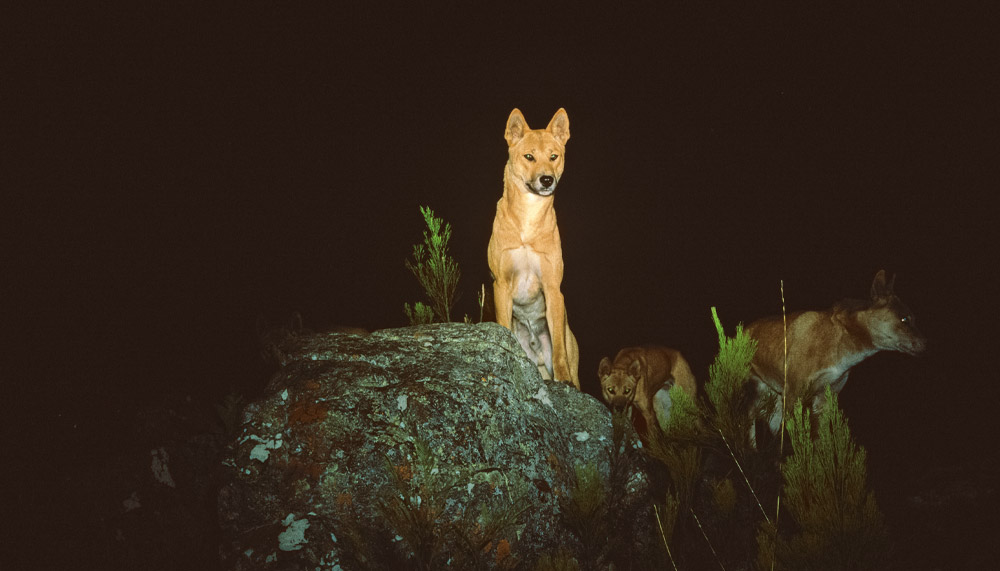While most pastoralists are keen to remove wild dogs from their properties, others are championing the dingo, saying it can help return the productivity of grazing lands.
Story Bron Willis Photo Auscape/Alamy
Strung up on a tree near a station track, two dead dingoes sporting bullet wounds sway in the wind. It’s been decades since Wooleen Station owner David Pollock employed any shooters on his southern rangelands pastoral property in the Murchison, WA, so he reads the display as a message from a mystery local who doesn’t like David lauding the dingo as part of his sustainable cattle grazing operation.
“There’s a lot of emotion attached to dingoes,” David says. “The culture of the past is a slow-moving beast. We simply can’t recover the damage that’s been done to the rangelands, or maintain its productivity into the future without the dingo – we simply can’t do that.”
At the centre of David’s argument is the unmanaged grazing pressure applied by feral goats and kangaroos. A 1991 aerial survey by the Department of Agriculture found that livestock accounted for less than half of the total grazing pressure on the rangelands, with 61% being attributed to kangaroos and feral goats (49% from kangaroos and 12% from goats).
David draws a correlation between periodically destocking, the return of perennial grasses at Wooleen and the return of the dingo (from about 2007), which David says resulted in a dramatic reduction in the unmanaged grazing pressure to about 5%. David says both the dingo and the grasses contribute to the long-term viability of grazing this country after 130 years of overgrazing.
He is one of five landholders who drive Landholders for Dingoes, a group which “regards dingoes as important in maintaining both landscape-based livelihoods and the environmental health of Australian landscapes”. The group includes Gill Campbell, who owns and manages 13,000ha Claravale Station, north of Mitchell in south-western Queensland. Gill allows dingoes to control their own populations at Claravale and reports that after the cessation of indiscriminate dingo control, “incidents of killing and injury to cattle has greatly reduced”.
But not all agree with the dingo-friendly approach. While David enjoys the benefits dingoes bring, neighbours curse the animal for the havoc it wreaks.
“It’s quite devastating the damage they can inflict upon your flock,” says Bob Grinham, manager of Meka station, 80km to the south-east of Wooleen, where dingoes were a large factor in a 2019 decision to change from sheep to cattle. “Some of the injuries are horrific.”
This story excerpt is from Issue #146
Outback Magazine: December/January 2023









